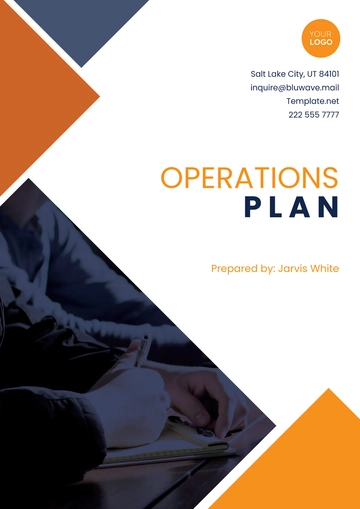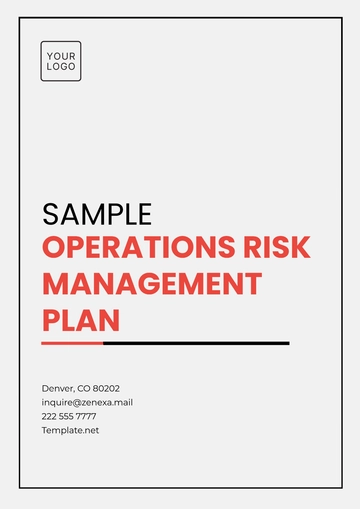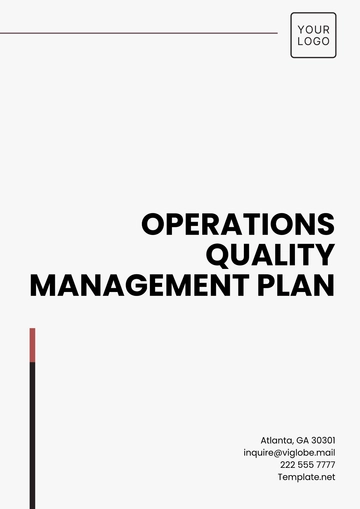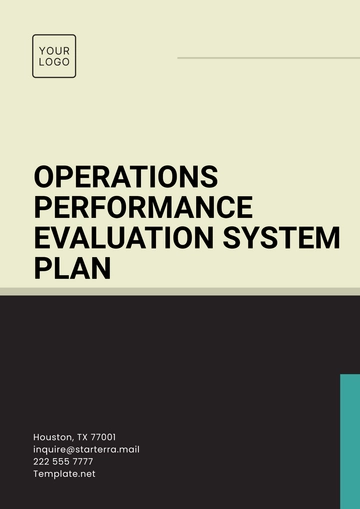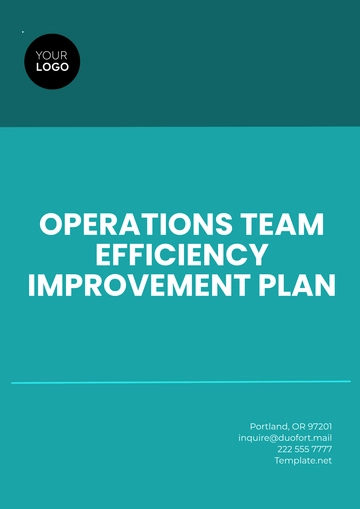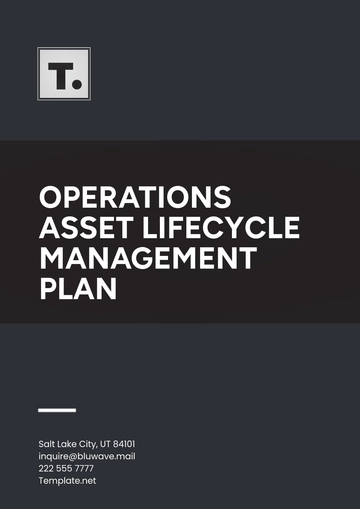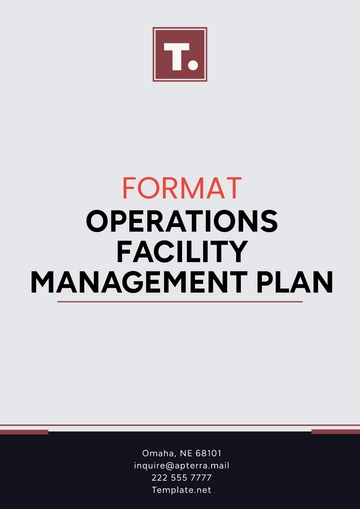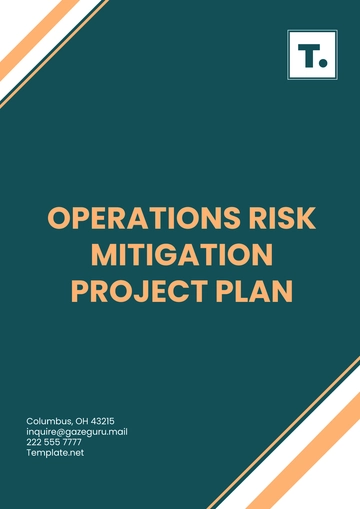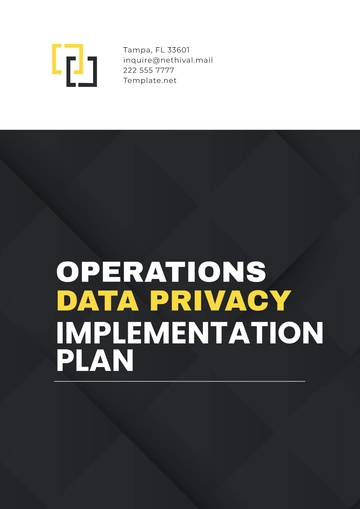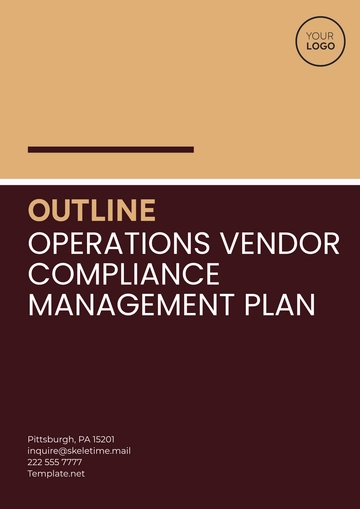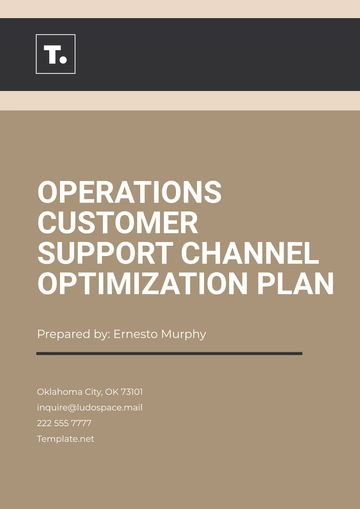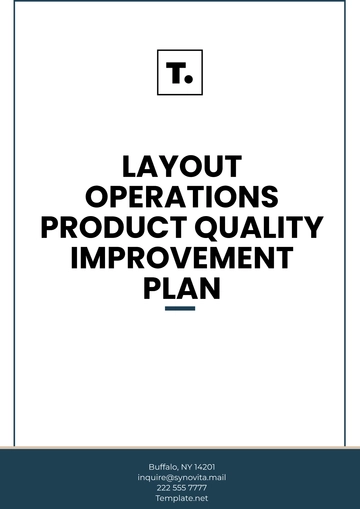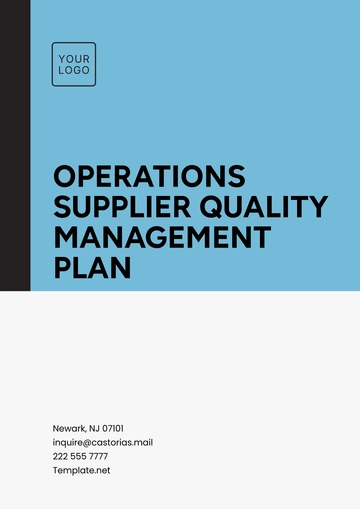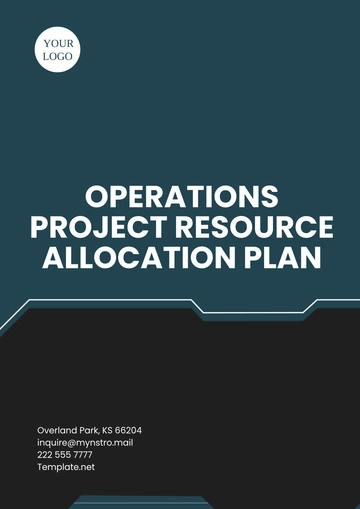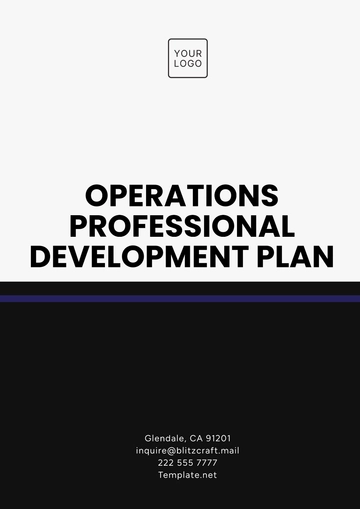Free Sample Police Operational Plan
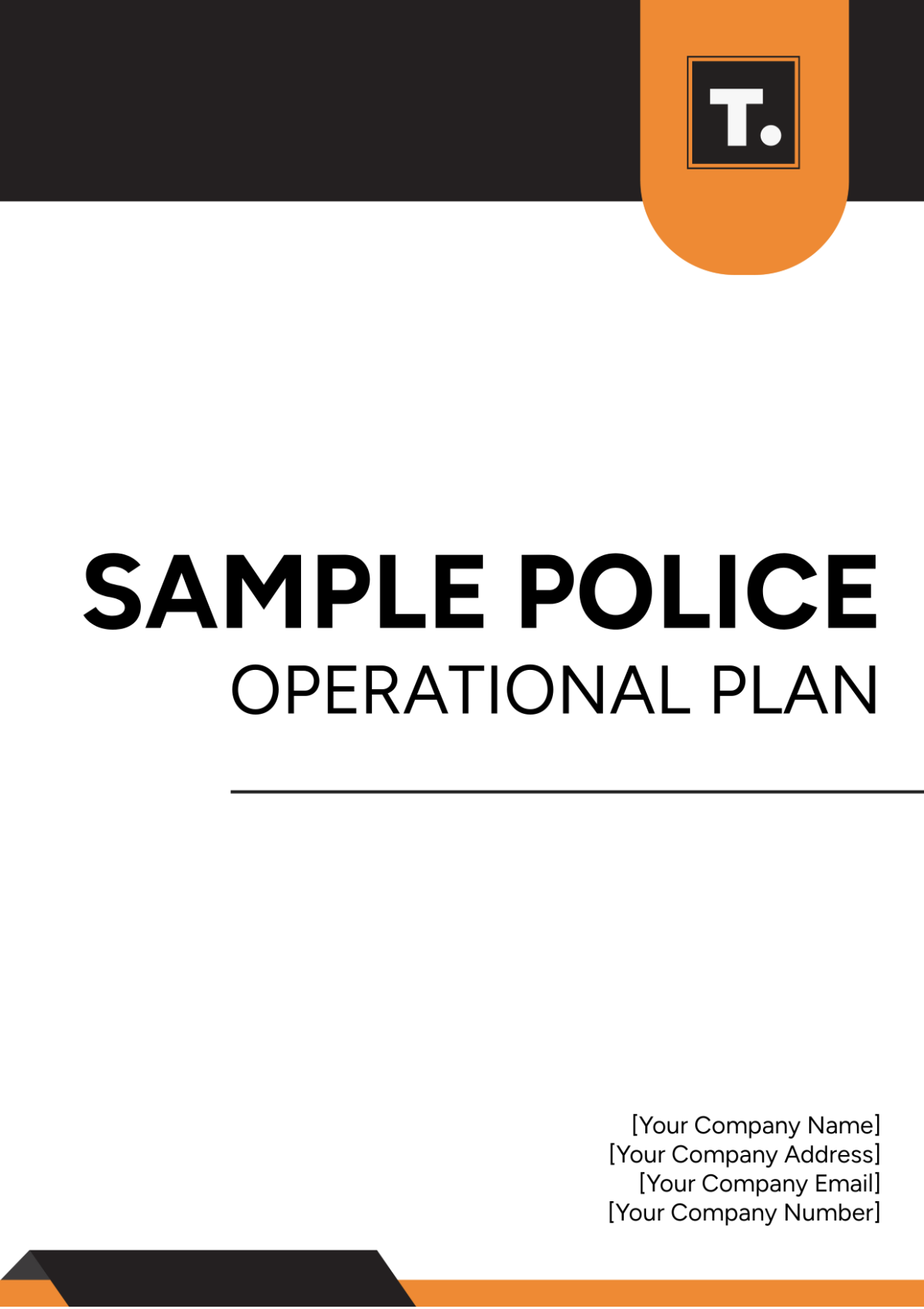
I. Executive Summary
This Police Operational Plan provides strategic guidelines and structured strategies to effectively manage and execute police operations. This plan outlines the objectives, mission, and operational procedures to be followed for the effective functioning of police activities from 2050 and beyond.
II. Objectives and Goals
Ensure public safety and maintain law and order.
Reduce crime rate by 20% by the end of 2051.
Enhance community policing and engagement strategies.
Improve response time to emergency incidents within 5 minutes.
III. Operational Guidelines
The operational guidelines outlined below serve as the fundamental principles guiding all police activities and procedures, fostering consistency, effectiveness, and public trust.
Maintain High Standards of Integrity and Professionalism: Police officers must consistently display professionalism, integrity, and ethical behavior, treating everyone respectfully and fairly while adhering to departmental codes.
Adhere to Local and Federal Laws and Regulations: Adhering to local, state, and federal regulations is crucial for the legality and legitimacy of police actions. Officers need a deep knowledge of legal standards and must strictly follow set procedures.
Implement Best Practices for Crime Prevention and Law Enforcement: Use proven, research-backed methods to fight crime effectively and provide ongoing training to equip officers with modern, proactive policing techniques.
Ensure Transparency and Accountability in All Operations: Transparency in police operations requires clear communication about policies and actions, along with accountability measures such as internal reviews and civilian oversight. Regular audits and evaluations should be performed to improve practices and ensure adherence to standards.
IV. Strategy Implementation
To achieve the outlined objectives, the following strategies will be employed:
Community Policing: Build stronger relationships with community members through regular meetings, public forums, and social media interactions.
Technological Advancement: Utilize modern technology like surveillance systems, data analytics, and mobile applications to enhance operational efficiency.
Training and Development: Regular training sessions for police officers to keep them updated on the latest regulations, tactics, and technologies.
Collaboration: Partner with other law enforcement agencies, public institutions, and community organizations.
V. Resource Allocation
Resource Type | Quantity | Allocated Budget | Implementation Date |
|---|---|---|---|
Personnel | 200 Officers | $10,000,000 | January 2050 |
Vehicles | 50 Patrol Cars | $2,000,000 | March 2050 |
Equipment | Surveillance Systems | $5,000,000 | June 2050 |
VI. Timeline of Activities
Activity | Start Date | End Date | Responsible Team |
|---|---|---|---|
Crime Analysis | January 2050 | June 2050 | Intelligence Unit |
Community Engagement | February 2050 | Ongoing | Community Relations Team |
Surveillance Implementation | March 2050 | September 2050 | Technology Team |
VII. Monitoring and Evaluation
To ensure the success of the operations, regular monitoring and evaluation activities will be conducted:
Monthly performance reviews to assess operation effectiveness.
Annual audits to ensure compliance with guidelines and financial transparency.
Regular community feedback sessions to gauge public satisfaction and areas of improvement.
VIII. Conclusion
This operational plan reflects our commitment to proactive and collaborative policing, aimed at safeguarding public safety and enhancing community resilience. By adhering to established protocols and continually evaluating our strategies, we will ensure effective responses to any challenges that may arise.
- 100% Customizable, free editor
- Access 1 Million+ Templates, photo’s & graphics
- Download or share as a template
- Click and replace photos, graphics, text, backgrounds
- Resize, crop, AI write & more
- Access advanced editor
Elevate law enforcement operations with the Sample Police Operational Plan Template from Template.net. This comprehensive tool is not only editable but also fully customizable, ensuring seamless adaptation to diverse policing needs. Empower your department to strategize effectively, enhance community safety, and optimize resource allocation. With this template, achieve operational excellence and uphold public trust with confidence.
You may also like
- Finance Plan
- Construction Plan
- Sales Plan
- Development Plan
- Career Plan
- Budget Plan
- HR Plan
- Education Plan
- Transition Plan
- Work Plan
- Training Plan
- Communication Plan
- Operation Plan
- Health And Safety Plan
- Strategy Plan
- Professional Development Plan
- Advertising Plan
- Risk Management Plan
- Restaurant Plan
- School Plan
- Nursing Home Patient Care Plan
- Nursing Care Plan
- Plan Event
- Startup Plan
- Social Media Plan
- Staffing Plan
- Annual Plan
- Content Plan
- Payment Plan
- Implementation Plan
- Hotel Plan
- Workout Plan
- Accounting Plan
- Campaign Plan
- Essay Plan
- 30 60 90 Day Plan
- Research Plan
- Recruitment Plan
- 90 Day Plan
- Quarterly Plan
- Emergency Plan
- 5 Year Plan
- Gym Plan
- Personal Plan
- IT and Software Plan
- Treatment Plan
- Real Estate Plan
- Law Firm Plan
- Healthcare Plan
- Improvement Plan
- Media Plan
- 5 Year Business Plan
- Learning Plan
- Marketing Campaign Plan
- Travel Agency Plan
- Cleaning Services Plan
- Interior Design Plan
- Performance Plan
- PR Plan
- Birth Plan
- Life Plan
- SEO Plan
- Disaster Recovery Plan
- Continuity Plan
- Launch Plan
- Legal Plan
- Behavior Plan
- Performance Improvement Plan
- Salon Plan
- Security Plan
- Security Management Plan
- Employee Development Plan
- Quality Plan
- Service Improvement Plan
- Growth Plan
- Incident Response Plan
- Basketball Plan
- Emergency Action Plan
- Product Launch Plan
- Spa Plan
- Employee Training Plan
- Data Analysis Plan
- Employee Action Plan
- Territory Plan
- Audit Plan
- Classroom Plan
- Activity Plan
- Parenting Plan
- Care Plan
- Project Execution Plan
- Exercise Plan
- Internship Plan
- Software Development Plan
- Continuous Improvement Plan
- Leave Plan
- 90 Day Sales Plan
- Advertising Agency Plan
- Employee Transition Plan
- Smart Action Plan
- Workplace Safety Plan
- Behavior Change Plan
- Contingency Plan
- Continuity of Operations Plan
- Health Plan
- Quality Control Plan
- Self Plan
- Sports Development Plan
- Change Management Plan
- Ecommerce Plan
- Personal Financial Plan
- Process Improvement Plan
- 30-60-90 Day Sales Plan
- Crisis Management Plan
- Engagement Plan
- Execution Plan
- Pandemic Plan
- Quality Assurance Plan
- Service Continuity Plan
- Agile Project Plan
- Fundraising Plan
- Job Transition Plan
- Asset Maintenance Plan
- Maintenance Plan
- Software Test Plan
- Staff Training and Development Plan
- 3 Year Plan
- Brand Activation Plan
- Release Plan
- Resource Plan
- Risk Mitigation Plan
- Teacher Plan
- 30 60 90 Day Plan for New Manager
- Food Safety Plan
- Food Truck Plan
- Hiring Plan
- Quality Management Plan
- Wellness Plan
- Behavior Intervention Plan
- Bonus Plan
- Investment Plan
- Maternity Leave Plan
- Pandemic Response Plan
- Succession Planning
- Coaching Plan
- Configuration Management Plan
- Remote Work Plan
- Self Care Plan
- Teaching Plan
- 100-Day Plan
- HACCP Plan
- Student Plan
- Sustainability Plan
- 30 60 90 Day Plan for Interview
- Access Plan
- Site Specific Safety Plan
